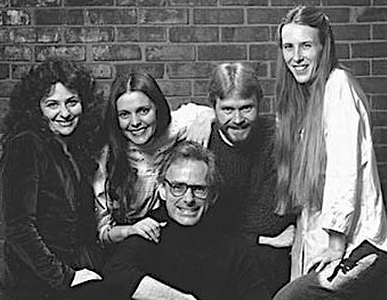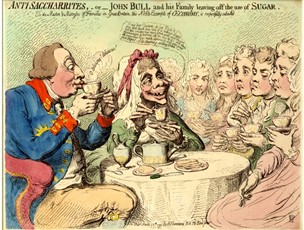April 8 & 9: Both David and I are a little embarassed to say we both love John Van der Putt, a London born comic and magician, who was a finalist on America’s Got Talent in 2015. His thing is that he wears a really dopey dragon suit, and works under the name Piff the Magic Dragon, with a sidekick — a chihuahua in a matching dragon costume. That’s the embarrassing part. But he has a dry wit and does mind-boggling closeup magic as good as anything Ricky Jay — an American Master — has done . It’s also worth checking out his early routines in the British troupe standnotamazed.

April 9: Ensemble Alcatraz is reuniting. This quintet of medieval music specialists named for the San Francisco Bay Island and the albatross of Iberian folklore was born in the early ’80s, and helped make the Bay Area a center for scholarship in early music. Oh, and they play and sing beautifully. This concert will draw on two sources from the medieval Iberian peninsula: The Cantigas de Santa Maria of Alfonso El Sabio and The Cantigas de Amigo. They’re basically folk songs from the troubadour traditions of Iberia about an erotic relationship with the divine, among other things. Harpist Cheryl Ann Fulton says the acoustics are exceptional at the space used for the always wonderful Live at Mission Blue Series in Brisbane. Details here.
April 14-23: Benoît Charest wrote the “gypsy jazz” score for the Triplets of Belleville, a French animated film that was a pretty big hit back in 2003 — as much for the music as the wacky story, about an elderly woman rescuing her Tour de France riding grandson from the French Mafia. Now Charest will lead what he calls Le Terrible Orchestre de Belleville in a performance of the music at the SF Opera Lab with live sound effects as the film plays. A bicycle wheel apparently plays an important role in the music, so all you Bay Area bicycle commuters should make time for the show. Details here.

Continuing through August 15: Blood in the Sugar Bowl is a show at the Cantor Museum about the about the racial politics of sugar in the 17th and 18th centuries. Sugar cane fields in the Caribbean were worked by slaves; a part of the rum, sugar and slave trade that built the New England economy. Graduate students at Stanford put this show together with materials from the Cantor’s collection, including drawings, paintings, and sugar bowls that may never look quite as elegant once you read the story of how the sugar got there. Details for this free show at the Cantor on the Stanford Univ. campus are here.
April 10: Shadowland is the third installment in a rock-opera trilogy of sorts, by the Residents, that trio of anonymous avant-garde performers who defy all categories. This final installment of the Randy, Chuck & Bob Trilogy is about birth and reincarnation, but over its 40 years together The Residents and their music have always defied labels easy or complex. A screening of a documentary about The Residents, The Theory of Obscurity, precedes the concert at the Regency Ballroom in San Francisco, which you’ll details on here.